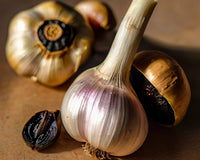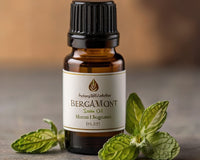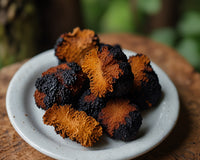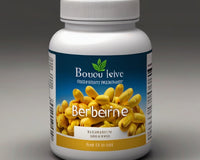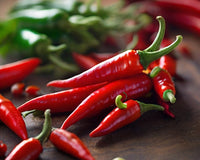In 1046, while passing through a town on his way to his coronation, Holy Roman Emperor Henry III received a silver flask containing the famous vinegar. Records of this visit are believed to be the first written mention of balsamic vinegar, a condiment once known only to people in the Emilia-Romagna region of what is now modern Italy, and only in the province of Reggio Emilia Production - where Henry III was visiting - and neighboring Modena.
Today, balsamic vinegar is well-known to chefs around the world and available to shoppers around the world. It can sell for as much as $200 an ounce, or as low as $3 for a 16-ounce bottle. But how can one vinegar be offered in such an amazing price range? How can a condiment befitting a king and a salad dressing? The answer, of course, is that there’s more than one balsamic vinegar. But understanding these differences takes some work.
traditional balsamic vinegar
Traditional balsamic vinegar is the granddaddy of balsamic vinegar. To this day, it is made only in Reggio Emilia and Modena, Italy, using traditional methods, with the production process overseen from start to finish by a special certification agency.
Traditional balsamic vinegar starts with must – the whole pressed grape, including juice, skins, seeds and stems. Grape juice from locally grown and late-harvested sweet white grapes (usually Lambrusco or Trebbiano varieties) is cooked over a direct flame until about half concentrated, then left to ferment naturally for up to three weeks before being matured and further concentrated for at least 12 years. "Battery," or five or more consecutive smaller aging barrels. These barrels are made from different types of wood, such as oak, chestnut, cherry, juniper and mulberry, so the vinegar can take on the complex flavors of the barrel.
Once a year, the vinegar is bottled from the smallest barrel in the sequence. Each bucket is then filled with the vinegar from the next bucket, with the largest bucket filled with the new product. Not a single barrel was ever completely drained. This aging process is similar to the solera process used for fine sherrys, ports, sweet wines and Spanish brandies. Vinegar will become thicker and more concentrated as it ages due to evaporation from the barrel walls - the vinegar in the smallest barrel will be thicker and more syrupy than the liquid in successively larger barrels.
Because of the multi-barrel process, complex mathematics is required to measure the average age of a bottle, so a tasting committee of five expert judges was convened to taste the vinegar and determine the appropriate grade, with no age printed on the label. In Reggio Emili Asia, traditional balsamics are graded as affinato (fine), with a red cap, roughly corresponding to the 12-year vintage; vecchio (old), with a silver cap, roughly corresponding to the 15-20 year vintage; or extra vecchio (very old), with a gold cap, roughly corresponding to a vintage of 20-25 years. In Modena, there is only affinato with a white cap, or extra vecchio with a gold cap.
Color and Texture: Traditional balsamic vinegar is glossy, sticky, and dark brown, but it catches the light well. It moves like syrup and has a velvety texture on the tongue.
Flavor: A rich, complex sweetness explodes in the mouth with hints of figs, molasses, cherries, chocolate or plums. Traditional balsamic should absorb the flavor of its mature wood and may have a slightly smoky flavor. Traditional balsamic vinegar provides a mellow sour flavor rather than strong acidity.
Logo: Traditional balsamic vinegar is always labeled Aceto Balsamico Tradizionale and carries the DOP ("Denominazione di Origine Protetta") seal - an EU certification guaranteeing the quality, production and origin of the ingredients. The only ingredient is grape juice. Traditional balms contain naturally occurring sulfites; nothing should be added.
Traditional balms are sold in wax-sealed bottles with a unique identification number. The traditional balm from Modena is only sold in a bulb-shaped 100 ml bottle. If it comes from Reggio Emilia, it comes only in a 100 ml bottle shaped like an upside-down tulip. If it comes from anywhere else, it's not traditional balsamic vinegar.
Purpose: Traditional balsamic vinegar is not a cooking ingredient—heating it destroys its unique flavor—and it is wasted as an ingredient in salad dressings. Instead, use it where it can shine. Try a few drops on fresh berries, Parmigiano-Reggiano cheese or creamy desserts such as panna cotta, zabaglione or vanilla ice cream.
Traditional balsamic can be used at the end of cooking. It's great drizzled over traditional veal scallops, rich risotto or risotto. It's also great for grilled meats and seafood. Add about a teaspoon per person just before serving for best flavor.
In Italy, a very good balsamic can also be used as a palette cleanser, aperitif or digestif, especially on special occasions such as weddings. The name "balsam" means that vinegar was originally used as a tonic or "balm."
Storage: Traditional balsamic vinegar can be kept indefinitely, but store it in a cool, dark place to best preserve the complexity of its flavor and away from other pungent ingredients. Balsamic vinegar will not continue to mature in the bottle.
Balsamic Sauce
Because the production of traditional balsamics is so strictly defined and regulated, there is some apparent clarity in its classification. Delve deeper into the world of balsamic vinegar and things get even more confusing.
"Condiment" is a term used to cover balsamic vinegars made in the traditional way that cannot earn a "traditional" designation, usually because they are not produced under proper supervision or because they do not meet ripening standards. Typically they are premium balsamic vinegars produced outside Modena and Reggio Emilia, or vinegars from traditional producers that are aged for only three, five or seven years.
These products are usually much cheaper than tradizionale balms, but are usually still of good quality, so they may be better value for money. However, because the title "condiment" is not a protected name, the term can also be found in lower-grade vinegars, and some versions of "condiment" or "condiment" may appear on balsamic products.
Color and Texture : Because balsamic is cooked and then further concentrated through maturation, it tends to have greater viscosity and depth of color, and the older it is, the richer its flavor. A good condiment should really coat the walls of the glass.
Flavor: Condimento doesn't have the woody notes and lingering complexity of traditional balsamics, but should still offer a nice mix of acidity, sweetness and leathery, cherry flavors.
Logo: Condimento labels will not have the DOP seal, but should have the IGP seal - "indicazione geografica protecttta", or protected geographical indication. Condimento may also bear the seal of the Consorzio di Balsamico Condimento, a body that monitors condiment-grade balsamics and is a good indicator of quality. Condiments should be relatively expensive - about $40 for a large bottle.
The most important thing to check to ensure good seasoning is the ingredients list. If grape juice is the only ingredient, that's a good sign. Some dressings may contain a bit of wine vinegar to balance the acidity, but if wine vinegar is the first ingredient, you'll see regular vinegar sweetened with balsamic vinegar rather than balsamic vinegar balanced with a little vinegar.
It's a good sign if the label has a last name and a real address, as it indicates small-scale production. Some condiments are made by traditional balsamic producers, which is a very good sign.
Usage: The dressing should be used in exactly the same way as a traditional balsamic, the advantage is that you can use it more freely because it is much cheaper! This also means you can use it in salad dressings, but you should make it your main flavoring.
Storage: Like traditional balsamics, the dressing can be stored permanently, but should be kept away from strong flavors and strong light.
Modern IGP Balsamic Vinegar
The first balsamic vinegar sold in the United States was supplied in 1977 by Chuck Williams, founder of Williams-Sonoma. Presumably they were the real deal, but that was the beginning of Modena's import balsamic vinegar boom, and demand soon oversupplied.
This surge in popularity led to an increase in derivative products, which in turn led to the introduction of the protected name of true traditional balsamic vinegar. But the DOP designation protects only the best; it makes no difference between mass-market balms.
This is where the IGP name comes in. Introduced by the EU in 2009, the IGP guarantees products made from typical Modena grape varieties (Albana, Ancelota, Fortana, Lambrusco, Montuni, Sangiovese and Trebbiano) , although the grapes can come from anywhere and only need to be processed in Modena. This is the only way that Balsamic Vinegar of Modena can be produced in sufficient quantities to meet demand.
The vinegar is cooked in pressurized barrels and aged in large wooden barrels for at least two months. There is no fermentation stage. Balsamic vinegar from Modena IGP must contain wine vinegar, giving it an acidity of at least 6%, and can contain up to 50% wine vinegar, usually both old and young. It may contain thickeners, caramel, or other coloring agents to make it more like a real balm. The balance of ingredients can create a balsamic vinegar as cheap as $5 or as expensive as $50.
Color and Texture: The appearance of Modena IGP balsamic vinegar varies greatly because additives are allowed and the ratio of wine vinegar to grape juice is variable. If the label doesn't list any thickeners and the vinegar looks thick, it probably contains a high percentage of grape juice.
Flavor: IGP Balsamic Vinegar has a higher acidity, which is strongly reflected in the flavor. It's not a complex condiment, but closer to a standard vinegar with a hint of sweetness. The quality of these vinegars varies greatly, which may be reflected in the price. Darker vinegar should be sweeter. Expensive vinegar should be more complex.
Identification: There shouldn't be much on the label of IGP balm other than the IGP name and the yellow and blue IGP seal (showing two wrinkled hillsides in a star ring). The EU bans the use of potentially misleading language and numbers on these labels to prevent manufacturers from deceiving consumers into thinking they are vintage products.
The word "aged" may appear on the IGP balsamic label if the product has been aged in barrels for more than three years. Some manufacturers use their own rating systems to differentiate the balsamic vinegars in their own lines. For example, the four-leaf system uses leaves to indicate the density and sweetness of vinegar, but the quality indicated by these ratings is not consistent from one producer to another. As mentioned above, IGP certification also appears on most flavored balsamics.
Usage: This grade of balsamic vinegar is also known as balsamic insalata, which gives you a clue as to how to use it; it's the balsamic of choice for delicious salad dressings. It's also a great flavor enhancer for soups and stews and makes an ideal marinade. Unlike fancy balsamics, it's actually great for cooking because it reduces lint. In fact, one of the easiest ways to make salad balsamic is to make an inexpensive balsamic syrup by adding some sugar to a boil in a saucepan. Light salad balsamic is extra tart, making it ideal for dressings and dips. Darker salad balsamics are sweeter and make better marinades and drizzles. The darkest varieties are the ones used to experiment with ice cream or berries, although they won't provide the same thrill as the real thing.
Storage: This grade of balm can also be stored indefinitely.
imitation balm
While Modena IGP's balsamic vinegar uses at least wine vinegar and ripe grape juice, there are some vinegars on the shelves that use the term "balsamic vinegar" and are actually just vinegar with added sweeteners and coloring. They may be made with wine vinegar, white vinegar, or apple cider vinegar, and they are industrially produced to mimic the texture and flavor of balsamic for a fraction of the price. Some of these vinegars may claim to be made in Italy, but without the IGP seal, the ingredients could come from anywhere.
Some balsamic-style vinegars are produced outside of Italy—for example, in Spain, Greece, France, the United States, or Canada. Some of these approach the quality of fine balsamic vinegar, the clue is always in the ingredients. If the ingredients only list cooked must-haves, it's a high-end balsamic imitator. If it contains cooked grape juice and vinegar, it's closer to IGP. While these vinegars are nothing like traditional balsamic, they do get used in the kitchen for things like salad dressings and marinades. Check the ingredients and taste around to find one you like.
balm products
The popularity of balsamic vinegar has spawned a micro-industry of spin-off products. We have mentioned some of the main ones here, but it should be noted that high-quality balms are never wasted in derivative products.
Balsamic Glaze: A thick syrup usually made from grape juice, IGP balsamic vinegar, guar gum, and xanthan gum. It's essentially a way to give a cheap balsamic the consistency of an expensive balsamic so that it can be used in the same way - as a drizzle or sauce.
Balsamic Ketchup: A ketchup that swaps out the white vinegar for balsamic vinegar. This adds some flavor to the tomato sauce at the expense of the complexity of the balsamic.
Balsamic vinegar pearls: A curious artifact of the molecular gastronomy craze, balsamic vinegar pearls are balsamic vinegar from IGP of Modena transformed into small black balls with the help of gelling agents and other additives. If you don't trust yourself to drizzle elegantly, here's a fancy décor.
Balsamic glaze: Another name for balsamic glaze.
Flavored Balsamic Vinegar: Balsamic vinegar has flavoring additives added to it, such as lemon, vanilla, herbs, fruits, berries, etc. Good balsamic vinegar doesn't need any more flavor than good wine, so if balsamic vinegar has flavor enhancers, that can be taken as a bad sign.
Saba: Considered the ancestor of balsamic vinegar and popular in Roman times, saba is a sweet syrup made from slow-cooked concentrated grape juice. It is unfermented but may be aged in barrels for several months. Vincotto is a similar condiment from southeastern Italy. They are both great alternatives to balsamic vinegar.
White Balsamic: Sweet white wine vinegar. White balsamic is slow-cooked to avoid caramelization and has no ripening requirements. Not a real balsamic at all, as caramelization is a necessary part of producing real balsamic.

